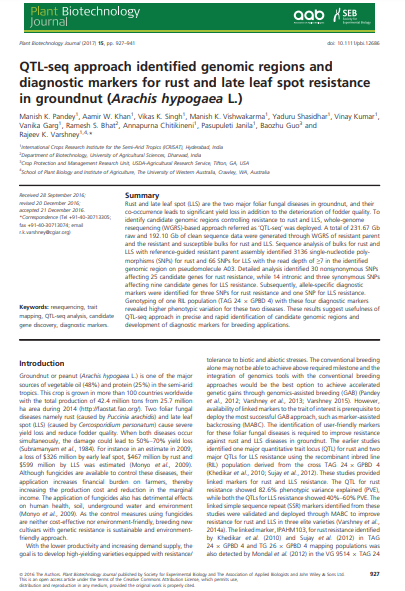QTL-seq approach identified genomic regions and diagnostic markers for rust and late leaf spot resistance in groundnut (Arachis hypogaea L.)
Summary
Rust and late leaf spot (LLS) are the two major foliar fungal diseases in groundnut, and their co-occurrence leads to significant yield loss in addition to the deterioration of fodder quality. To identify candidate genomic regions controlling resistance to rust and LLS, a whole-genome resequencing (WGRS)-based approach referred as ‘QTL-seq’ was deployed. A total of 231.67 Gb raw and 192.10 Gb of clean sequence data were generated through WGRS of resistant parents and the resistant and susceptible bulks for rust and LLS. Sequence analysis of bulks for rust and LLS with reference-guided resistant parent assembly identified 3,136 single-nucleotide polymorphisms (SNPs) for rust and 66 SNPs for LLS, with a read depth of ≥7 in the identified genomic region on pseudomolecule A03. Detailed analysis identified 30 non-synonymous SNPs affecting 25 candidate genes for rust resistance, while 14 intronic and 3 synonymous SNPs affected 9 candidate genes for LLS resistance. Subsequently, allele-specific diagnostic markers were identified for 3 SNPs for rust resistance and 1 SNP for LLS resistance. Genotyping of one RIL population (TAG 24 × GPBD 4) with these four diagnostic markers revealed higher phenotypic variation for these two diseases. These results suggest the usefulness of a QTL-seq approach for the precise and rapid identification of candidate genomic regions and the development of diagnostic markers for breeding applications.
Open resource Download resource Access resource on external site

